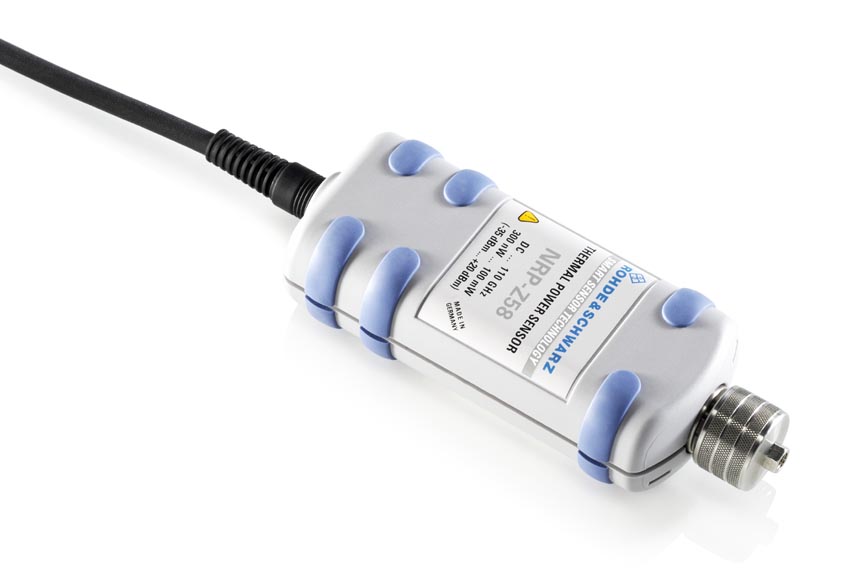Fast, precise, highly linear – Users working with a frequency range over 67 GHz now also benefit from the unique features of the thermal power sensors from Rohde & Schwarz. The new R&S NRP-Z58 is the world's first power sensor that covers the frequency range continuously from DC to 110 GHz.
Rohde & Schwarz has added the R&S NRP-Z58 to its successful portfolio of power sensors. The sensor’s high measuring speed of over 300 measurements per second in buffered mode allows especially fast power measurements. With a range of 55 dB (–35 dBm to 20 dBm), it offers the largest dynamic range (DC to 110 GHz) of any thermal power sensor on the market.

When performing relative measurements such as amplification and reflection measurements, the R&S NRP-Z58 delivers extremely precise measurement results thanks to its high linearity of 0.01 dB. The ball bearing 1.00 mm coaxial plug can be screwed conveniently and securely onto the jack of the measuring instrument to provide extremely high measurement reproducibility.
Like all thermal power sensors from Rohde & Schwarz, the R&S NRP-Z58 can be connected directly to a PC via a USB interface in order to analyze measurement results. It can also be used in combination with the R&S NRP2 base unit or with nearly any signal generator, signal and spectrum analyzer or network analyzer from Rohde & Schwarz.
For users of the R&S ZVA110 network analyzer, the power sensor is the perfect addition. It comes equipped with the appropriate 1 mm socket for connecting the R&S NRP-Z58. The power sensor makes it possible to achieve a consistent power calibration up to 110 GHz using a single instrument and without any adapter. Before, this required multiple power sensors and various adapters.
In addition, the power sensor helps users working in development, production and maintenance to determine the average power of CW signals, pulsed signals or even complex digitally modulated signals. This makes the R&S NRP Z58 especially well-suited for automotive applications at 77 GHz, such as automatic cruise control and collision warnings, as well as for radar systems for industrial and military applications at 94 GHz.
